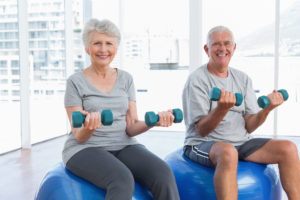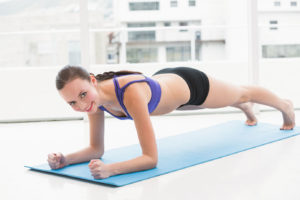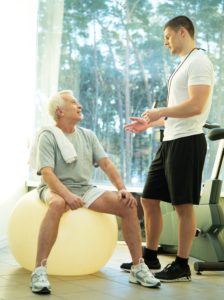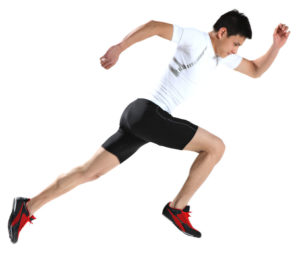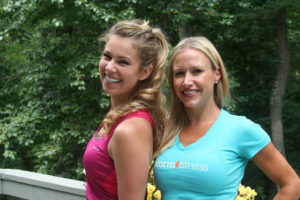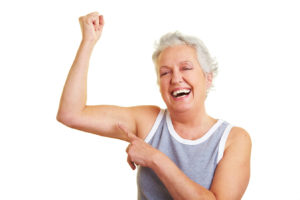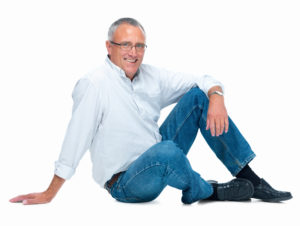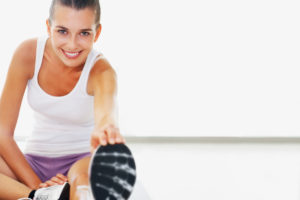Fitness Assessment
Physical Considerations for Training Older Seniors
The market for older seniors (70 and over) is growing thanks to the aging of the Baby Boomers. By 2050, 1 in 5 Americans (21%) will be 85 or older— up from roughly 14% in 2010 (Vincent & Velkoff 2010).
How to Make HIIT a Hit for Everyone
High-intensity interval training has been riding a wave of popularity, and it seems everyone wants to give it a try. However, intense interval training is nothing new. Group fitness instructors have been teaching HIIT for a long time. Fartlek training, for example, was big in the 1970s. The 1980s brought us high-impact classes, and the 1990s introduced indoor cycling (think repeat hill training). HIIT is a fantastic workout and an effective way to train energy systems; build muscle; lose weight; enhance strength, power and agility; and prevent adaptation.
5 Tips on Obtaining Physician Referrals
5 Tips on Obtaining Physician Referrals
Many fitness professionals may not know where to begin when attempting to build a career in medical fitness. These five communication strategies can help fitness professionals obtain physician referrals:
Heart Rate Variability & Overtraining
Can New Research Prevent an Age-Old Paradigm?
Heart rate variability (HRV) is a reliable marker of physiological factors that directly affect the rhythms of the heart (Acharya et al. 2006). Acharya and colleagues explain that HRV reflects the heart’s ability to adapt to changing circumstances—stress, exercise and disease—by balancing the regulation of the autonomic nervous system, which controls bodily functions such as breathing, heart- beat and digestion.
Foundations of New-Client Training
Knowing the client. When Jessica Storm, owner of Storm Fitness, meets with a new client, the assessment process begins immediately—often without the client realizing it. Storm first assesses emotional readiness. “You need to know where clients are starting from and get a clear understanding of how they could be motivated so that you can guide them in the appropriate direction,” she explains. Storm conducts this assessment through casual conversation—usually via telephone initially and in the first in-person meeting.
Simple Group Assessment in Seconds
Group exercise remains a popular option at fitness facilities, and instructors are being stretched to teach in smarter and more strategic ways. In one class you may have a multitude of experience levels, physical abilities and personal motivations. While this generates a unique energy, it also creates a challenge—and may make it more difficult to provide a safe, effective environment for everyone.
“How do you assess older adults when they start training with you?”
Since older adults are so diverse in their abilities, fitness levels, health conditions and interests, it is not realistic to use one assessment battery for everyone. However, a thorough review of each older-adult client’s health status—including current health conditions, past surgeries/injuries, medications and goals—is appropriate. This information helps determine which types of assessments an individual may need, as well as which particular assessments to perform.
American Heart Association Wants Doctors to Assess Physical Activity
In a recent statement, the American Heart Association has recommended that physicians become more involved in discussing patients’ physical activity levels.
Published in the association’s journal Circulation (2013; doi: 10.1161/01. cir.0000435708.67487.da), the statement expresses concern regarding the general population’s lack of physical activity.
Focus on Fitness Assessments
As a facility owner or manager, you know that ongoing monitoring can be essential if you want to contribute to your members’ fitness and wellness for the long term (Goldman 2012). A significant way to help people succeed in their fitness goals is to provide ongoing fitness assessments: measurements and tests that combine to determine an individual’s physical fitness.
Functional Strategies for Older Adults
Exercise for older adults is one of the hottest specialties in fitness today. How do you assess function levels and develop safe, challenging programs? We asked instructors to tell us about their strategies for senior clients.
Sit-to-Stand Predicts Mortality in Older Adults
A person’s ability to get up from the floor may be a predictor of mortality, according to researchers from Clinimex Exercise Medicine Clinic in Rio de Janeiro.
The study, published in the European Journal of Cardiovascular Prevention (2012; doi: 10.1177/2047487312471759), examined information from 2,000 adults, aged 51–80, from 1997 to 2011. Participants were asked to perform what researchers termed the sitting-rising test, a useful assessment of musculoskeletal fitness. Anyone currently playing sports or presenting with musculoskeletal limitations was excluded.
A Tool for Group Fitness Managers
Group fitness managers interested in gaining insights on program management have a new free resource created by IDEA author and presenter Shannon Fable and her Web developer husband John Fable. Called GroupEx PRO, the program aims to “help eliminate the frustration felt by group fitness managers with regard to communication.”
Here are some components of GroupEx PRO:
sub board that assists with requesting and approving subs
scheduler that allows a manager to embed updated schedules directly into a fitness facility website
What methods do you use to enhance flexibility in clients?
Our personal training studio primarily serves new exercisers or people who have not exercised for a while. Consequently, we require virtually all new clients to schedule an initial fitness assessment prior to exercising with us. During that assessment, flexibility (among other things) is evaluated and problem areas are identified. Commonly, these include the shoulder girdle (especially traps), lumbar region, hamstrings, hip flexors, glutes/hips and calves.
Our general rules of thumb for training flexibility in clients include the following:
Heart Rate Monitor for Training
Our heart’s physiological response to changes in exercise intensity during physical activity can be both monitored and measured to better manage a cardiovascular training (CVT) experience. A heart rate monitor is an accurate tool for measuring these changes. According to cardiovascular expert Sally Edwards of Sacramento, California, author of The Heart Rate Monitor Guidebook to Heart Zone Training (Heart Zones Publishing 2010), “You only need two pieces of gear to work out: a good pair of athletic shoes and a heart rate monitor.”
Important Risk Factor and Fitness Assessment “Numbers”
One of the principal areas of concern for exercise professionals is assessing, recognizing and explaining disease risk factors and other physiological variables for clients. From these evaluations and with the collaboration of medical professionals, personal trainers have a unique yet challenging opportunity to guide and encourage clients to make behavioral and lifestyle changes. This issue’s column serves as an informative resource for identifying the many “numbers” involved in clinical, fitness and health parameters.
Developing a Mental-Skills Performance Plan for a Client
Have you ever visualized yourself winning a race, completing a physical feat or attaining a performance goal—and it happened? There are numerous anecdotal stories and testimonials about recreational enthusiasts and competitive athletes using imagery to achieve some type of physical objective. However, what does the research conclude as to the effectiveness of imagery? More specifically, how can fitness professionals aid their students and clients in employing imagery to positively affect physical and performance outcomes?
The Bare Bones
When you were young, you probably heard the jingle “The knee bone’s connected to the thigh bone; the thigh bone’s connected to the hip bone; the hip bone’s connected to the back bone . . .” That ditty could go on for some time, since there are 206 bones in the human body—from the large, thick femur that spans the length of your thigh to the tiny, thin stapes, a stirrup-shaped bone that transmits sound inside your ear. Your skull alone has 22 bones (no wonder my mother keeps telling me I have a hard head!).
Don’t Overlook the Underweight
How many times have you read a news story that began with alarming statistics about the growing obesity crisis in the United States? As fitness professionals, we have dedicated our…
Improving Functional Abilities in Older Adults
Improving Functional Abilities in Older Adults
Which are the most effective training programs for your mature clients, and how can you best assess their current level of functional ability?
By Cody Sipe, MS
T
The number of people now approaching middle age in America is simply astonishing–and unprecedented in history. It is anticipated that the U.S. population of adults over the age of 65…
The Shoulder, Part III
The arm (upper limb) rotates medially and laterally about a vertical axis (through the long axis of the humerus). This motion is produced by contraction of the rotator muscles along with other muscles of the upper limb.
